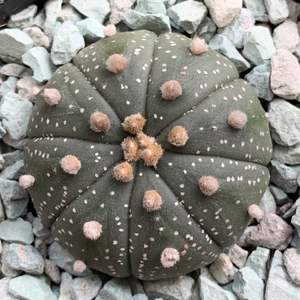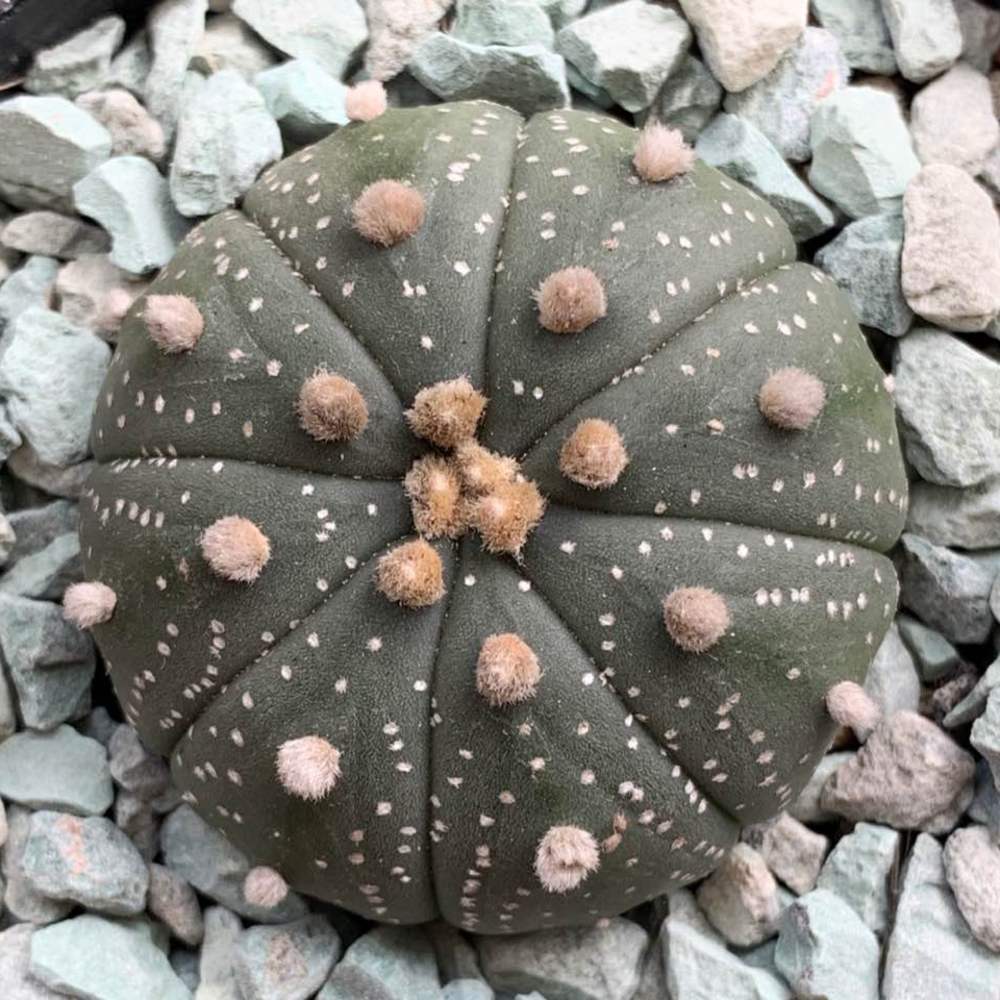Plant Experience
Detail
Astrophytums are not vigorous plants and they require a lot of patience to reach their full potential. Keep regularly watering and feeding them during the growing season and repot annually to give them space to develop. They need a temperate, dry winter as well, and make sure not to overwater them to avoid rotting their roots. If given sufficient care, they will develop marvelous flowers once they reach maturity. Watch out for common cactus pests like aphids and scale, as well—these can often be taken care of by a good eco-friendly pesticide, or simply wiped away with cloth.
Repot regularly to help them develop. Astrophytums should be repotted at the beginning of the growing season for best results, allowing them to grow into the impressive specimens for which the genus is known.
Growing Conditions
Light: Very sunny conditions, with hours of direct sunlight every day.
Water: Astrophytums like dry conditions, with sporadic watering in the summer and then a dry winter. During the growing season, water infrequently.
Temperature: They like hot temperatures above 70˚F (21˚C) during the summer and then prefer cooler, more temperate winters.
Soil: Typical cactus potting soil should be fine, ideally one containing some loam or peat.
Fertilizer: Fertilize during the growing season with a balanced, diluted fertilizer like a 20-20-20 mixed into their water.
Propagation
They propagate by seed, and their seeds are fairly fragile: be gentle with them before planting. They also have a fairly short shelf life and need to be planted quickly after harvesting to have a reasonable chance at rooting. When planting them, make sure they’re in well-aerated soil, then seal the newly planted seeds in to help catch moisture and heat. It can help to soak seeds before they’re planted.
Repotting
Repot regularly to help them develop. Astrophytums should be repotted at the beginning of the growing season for best results, allowing them to grow into the impressive specimens for which the genus is known. Protect your hands before repotting due to their stiff spikes and lift the plant out all at once, then replace in a larger pot and backfill with soil. Don’t overwater or overfeed newly repotted cacti, as disturbances can be hard on them.
Repot regularly to help them develop. Astrophytums should be repotted at the beginning of the growing season for best results, allowing them to grow into the impressive specimens for which the genus is known.
Growing Conditions
Light: Very sunny conditions, with hours of direct sunlight every day.
Water: Astrophytums like dry conditions, with sporadic watering in the summer and then a dry winter. During the growing season, water infrequently.
Temperature: They like hot temperatures above 70˚F (21˚C) during the summer and then prefer cooler, more temperate winters.
Soil: Typical cactus potting soil should be fine, ideally one containing some loam or peat.
Fertilizer: Fertilize during the growing season with a balanced, diluted fertilizer like a 20-20-20 mixed into their water.
Propagation
They propagate by seed, and their seeds are fairly fragile: be gentle with them before planting. They also have a fairly short shelf life and need to be planted quickly after harvesting to have a reasonable chance at rooting. When planting them, make sure they’re in well-aerated soil, then seal the newly planted seeds in to help catch moisture and heat. It can help to soak seeds before they’re planted.
Repotting
Repot regularly to help them develop. Astrophytums should be repotted at the beginning of the growing season for best results, allowing them to grow into the impressive specimens for which the genus is known. Protect your hands before repotting due to their stiff spikes and lift the plant out all at once, then replace in a larger pot and backfill with soil. Don’t overwater or overfeed newly repotted cacti, as disturbances can be hard on them.
Album (2)


kensong
2018-10-28

This is my first growing diary. AuustFame RM13.00




Elite Article













